TTTT: BFI Drops KANE in Bout of VERTIGO (Or: The New Greatest Films of All Time)

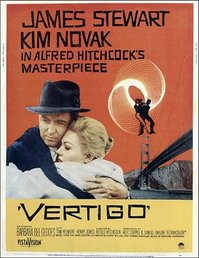 For film buffs, the biggest news out of London has nothing to do with the current Olympic Games, but rather the results of the latest poll by Sight & Sound magazine, the long running official publication of the British Film Institute (BFI). This not just any ordinary movie poll. Each decade, beginning in 1952, top film critics as well as selected festival programmers, academics and distributors are given the opportunity to have their say in what are the Greatest Films of All Time. This year, (supposedly their biggest poll yet,) 846 participants chimed in. The result is a headliner, if not altogether surprising: Hitchcock's VERTIGO (1958) has replaced Welles' CITIZEN KANE in the number one position.
For film buffs, the biggest news out of London has nothing to do with the current Olympic Games, but rather the results of the latest poll by Sight & Sound magazine, the long running official publication of the British Film Institute (BFI). This not just any ordinary movie poll. Each decade, beginning in 1952, top film critics as well as selected festival programmers, academics and distributors are given the opportunity to have their say in what are the Greatest Films of All Time. This year, (supposedly their biggest poll yet,) 846 participants chimed in. The result is a headliner, if not altogether surprising: Hitchcock's VERTIGO (1958) has replaced Welles' CITIZEN KANE in the number one position.
This is significant, since CITIZEN KANE has the unprecedented honor of being voted number one in each of their five previous polls, going back to 1962, when the film fell into favor. Wikipedia details how KANE has since dominated other such lists: "A separate (Sight & Sound) poll of established film directors, held for the first time in 1992, has also placed Citizen Kane at the top. The film was selected as number one in a Village Voice and in a Time Out critics' poll. It was listed as the greatest American film by the American Film Institute in both the first (1998) and second (2007) versions of its 100 Years... 100 Movies list." For as long as I've been any kind of student of film, it appeared as though KANE's position as the Greatest was a given, a virtual lock forever.
None of this praise for CITIZEN KANE is hyperbole. The film is truly a monumental achievement, not so much for pioneering, but rather for how Welles and company utilized the best of what came before them in the art of filmmaking, be in terms of cinematography, visual effects, storytelling, acting, use of sound... the list goes on. KANE, in its day, was the pinnacle of the art. Unfortunately, it was also marred by controversy, having incurred the wrath of media mogul William Randolph Hurst, among other offenses. So, KANE would miss the Best Picture Oscar for its release year (losing to John Ford's HOW GREEN WAS MY VALLEY), as well as the top spot on the first Sight & Sound Best of All Time list. (That honor would go to Vittoria De Sica's heart-wrenching 1948 film BICYCLE THEIVES, itself now residing at #33 on the 2012 list.)
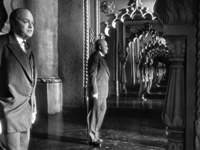 So why the VERTIGO-induced fall from grace for KANE? We can't know for sure, but I suspect that there's a good chance a bit of "KANE fatigue" has been quietly been festering. This has been evident in the way many writers, in recent times, have taken to calling out the film as great, if not the Best of All Time.
So why the VERTIGO-induced fall from grace for KANE? We can't know for sure, but I suspect that there's a good chance a bit of "KANE fatigue" has been quietly been festering. This has been evident in the way many writers, in recent times, have taken to calling out the film as great, if not the Best of All Time.
Also, let's not forget the Olympics factor. Not to get slightly conspiratorial, but perhaps British pride may be playing some part in this, what with their country on the global stage during it's hosting of the Olympic games and all. Never mind that S&S polls participants from all around the globe, a good portion of them American... like Orson Welles.
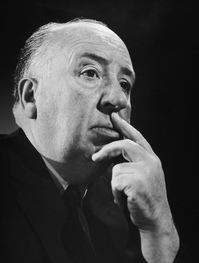 Alfred Hitchcock, perhaps the greatest and most popular filmmaker to ever come out of Britain (London, to be more exact), has certainly been due such major acclaim for a good while. And while he was most certainly British, and never truly lost that sensibility in his work, he did settle in Hollywood for the arguably greatest portion of his career - the portion that gave us STRANGERS ON A TRAIN, REAR WINDOW, PSYCHO, NORTH BY NORTHWEST, and of course, VERTIGO. On some level, it's safe to say that Hitchcock - or at the very least, that era of his career - can be claimed wholeheartedly by both Great Britain and the United States.
Alfred Hitchcock, perhaps the greatest and most popular filmmaker to ever come out of Britain (London, to be more exact), has certainly been due such major acclaim for a good while. And while he was most certainly British, and never truly lost that sensibility in his work, he did settle in Hollywood for the arguably greatest portion of his career - the portion that gave us STRANGERS ON A TRAIN, REAR WINDOW, PSYCHO, NORTH BY NORTHWEST, and of course, VERTIGO. On some level, it's safe to say that Hitchcock - or at the very least, that era of his career - can be claimed wholeheartedly by both Great Britain and the United States.
Welles, on the other hand, spent his career as a perpetual outsider, never bouncing back from the damaged he suffered in the initial reception of CITIZEN KANE. Although he hailed from Kenosha, Wisconsin, he did so as a divisive "boy genius", and would always display ex-pat tendencies, even if he never could truly escape the American filmmaking system. By legacy, Welles remains, of course, an American filmmaker, even if his own later career frustrations would perhaps give him pause to that, in terms of things such as national pride.
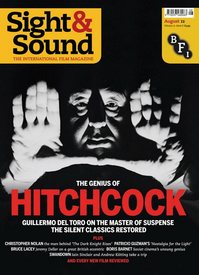 Did any of this truly affect the results of the latest Sight & Sound poll? Or was it simply time for a new number one? Like I said before, we can't know for sure. Certainly when the actual September issue of the magazine becomes available, it will offer all sorts of commentary on the subject. (Depending on what part of the world you're in, you can get a copy as soon as August 3rd. Mine will arrive in the middle of the month.) Within the past year, I was fortunate enough to have been gifted a Sight & Sound subscription - and during this window of activity, no less. For the past year, they've been running articles encouraging voters to consider previously and potentially overlooked films such as Jean Vigo's L'ATALANTE (1934, ranked #12) as well as recent, acclaimed works such as ONCE UPON A TIME IN ANATOLIA (2011, ranked Better Luck Next Time), all the while talking up the list, whetting our whistles. (Hindsight being 20/20, last month's issue offered nothing short of a massive clue regarding this list. See the cover.) For Sight & Sound, this international conflagration of activity is their Olympics - much ballyhooed, loaded with the international Best and Brightest, and, in the end, having just about as much effect on our day-to-day lives as the Games themselves. (Which is to say, next to none.)
Did any of this truly affect the results of the latest Sight & Sound poll? Or was it simply time for a new number one? Like I said before, we can't know for sure. Certainly when the actual September issue of the magazine becomes available, it will offer all sorts of commentary on the subject. (Depending on what part of the world you're in, you can get a copy as soon as August 3rd. Mine will arrive in the middle of the month.) Within the past year, I was fortunate enough to have been gifted a Sight & Sound subscription - and during this window of activity, no less. For the past year, they've been running articles encouraging voters to consider previously and potentially overlooked films such as Jean Vigo's L'ATALANTE (1934, ranked #12) as well as recent, acclaimed works such as ONCE UPON A TIME IN ANATOLIA (2011, ranked Better Luck Next Time), all the while talking up the list, whetting our whistles. (Hindsight being 20/20, last month's issue offered nothing short of a massive clue regarding this list. See the cover.) For Sight & Sound, this international conflagration of activity is their Olympics - much ballyhooed, loaded with the international Best and Brightest, and, in the end, having just about as much effect on our day-to-day lives as the Games themselves. (Which is to say, next to none.)
It's been said before, but such lists and polls, even major, carefully conducted polls such as the one in question, are, at the end of the day, just lists and polls. The stock we put in them is absolutely and only as much stock as they bear. Some, like the Sight & Sound poll, are worthy of our consideration and attention. Others, such as the "100 Years, 100 Movies" lists generated by the American Film Institute between 1998 and 2007, are less lofty if not fun. And then there's the regular myriad of ranked movie lists (20 Greatest Villains of All Time, Top 25 Cult Movies, etc.) that pop up in entertainment columns and magazines, many of which reek of editorial deadline dictate. And then on the far end, apart from all sensible legitimacy, I think of a local rock n' roll radio station, which, up until recently, spent the entire Memorial Day weekend counting down the Top 500 Rock Songs of All Time, all the while blatantly refusing to reveal how the list was arrived at, nor explaining the fact that the number one song of All Time was different every year. It was a sham, but so few of us could resist. I admit it, I'm a sucker for all such lists, but always with one foot planted firmly in the reality that ranking art is tantamount to dancing about architecture.
So let's look at the Sight & Sound poll just a little more closely. (For my own purposes, I'll go back as far as their 1972 list, and will remain less than scientific.) Many will no doubt look at such a list, and be a little perplexed. Most people, in this day and age, will not have seen, or even be familiar with the bulk of what this list touts as the Best. (I personally haven't seen all of them, but I've seen most of them. Of those, I will go to bat for any of them, any day of the week.) There's not a lot of mainstream here, but being mainstream is not the point here. Remember, these are critics and academics voting for S&S - film devotees who eat, sleep, and breathe global cinema in ways that most of us cannot afford the time or emotional energy to do. On a blanket level, this does not make them snobs, but rather experts. Experts worth listening to. Here's just a little of what they have to say:
- FORM MATTERS!: Sight & Sound critic's list mainstays such as Kubrick's 2001: A SPACE ODYSSEY (#6), Renoir's LA REGLE DU JEU (aka THE RULES OF THE GAME, #4), Fellini's 8 ½ (#10), and Ford's THE SEARCHERS (#7) to the top ten newcomer, Vertov's 1929 highly experimental MAN WITH A MOVIE CAMERA (#8), all, in their own ways, demonstrate the importance of cinematic visual language within the craft. Through their own very different uses of elements such as editing, framing, lighting, and set design, these towering films do the elusive thing that sets film apart from the other arts. They resonate as both engaging entertainment and intellectual stimulation, each in the best ways possible. They challenge and exhilarate us, primarily thanks to their winning craftsmanship that, no matter the film's age, never withers.
- EVERYONE CAN'T STAY: In 2002, Coppola's THE GODFATHER (actually both PARTS I & II, represented within a single entry) made the top ten for the first time, appearing at #4. This year, due primarily, I suspect, to a change in the rules that multiple films cannot occupy a single bracket, no GODFATHER films make the 2012 top ten. Also falling off are Donen & Kelly's SINGIN' IN THE RAIN (#3 in 1982, absent in 1992, and #10 in 2002) and Eisenstein's BATTLESHIP POTEMKIN (#7 in '02, #6 in both '92 and '82, #3 in '72). Other on-again-off-again entries that don't make the top ten cut this time include Keaton's THE GENERAL (#8 in 1972, #10 in 1982) and Kurosawa's SEVEN SAMURAI (#10 in '92, #3 in '82). Have these films really gotten any worse than the films they once ranked highly with? Of course not. One of the big points of this exercise is to demonstrate that although the movies don't change, we do. We change as individuals, we change as cultures, and there's always more to consider. In the meantime, a film's relevance may rise and fall, but there is no denying the greatness of these works.
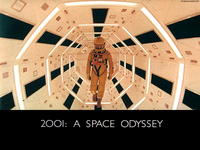 - DON'T DISMISS GENRE (OR DO?): Although at an uninformed glance, this list may appear as though a rack of "world cinema" Criterion Collection DVDs toppled down and landed in a descending order, there's actually a valid presence of that age-old tool we westerners cling to so dearly: Genre. Murnau's SUNRISE: A SONG OF TWO HUMANS (#5) is not only perhaps the original "date movie", but also a tremendously effective thriller. 2001: A SPACE ODYSSEY (#6) is no less than the greatest science fiction film ever made, and THE SEARCHERS (#7) is the Western pushed in bold new directions, particularly for 1956. Of course, the continuing presence of these films on the Sight & Sound list does nothing to justify the utter lack of horror, not to mention animation (not a genre, I know, but the omission argument still applies) on not just the top ten, but the current top fifty. (How does a game-changing masterpiece such as 1995's TOY STORY not make the cut in 2012??) Certain included films evoke these elements (horror, animation, etc.), but none completely embody them. But before you genre fans get your trousers in a knot, note that documentaries haven't fared so well here, either. (SHOAH, #29... and that's almost it, if we don't count Godard's experimental HISTORIE(S) DU CINEMA .)
- DON'T DISMISS GENRE (OR DO?): Although at an uninformed glance, this list may appear as though a rack of "world cinema" Criterion Collection DVDs toppled down and landed in a descending order, there's actually a valid presence of that age-old tool we westerners cling to so dearly: Genre. Murnau's SUNRISE: A SONG OF TWO HUMANS (#5) is not only perhaps the original "date movie", but also a tremendously effective thriller. 2001: A SPACE ODYSSEY (#6) is no less than the greatest science fiction film ever made, and THE SEARCHERS (#7) is the Western pushed in bold new directions, particularly for 1956. Of course, the continuing presence of these films on the Sight & Sound list does nothing to justify the utter lack of horror, not to mention animation (not a genre, I know, but the omission argument still applies) on not just the top ten, but the current top fifty. (How does a game-changing masterpiece such as 1995's TOY STORY not make the cut in 2012??) Certain included films evoke these elements (horror, animation, etc.), but none completely embody them. But before you genre fans get your trousers in a knot, note that documentaries haven't fared so well here, either. (SHOAH, #29... and that's almost it, if we don't count Godard's experimental HISTORIE(S) DU CINEMA .)
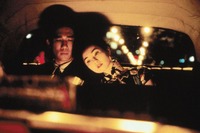 - NEW STUFF STILL HAS A SHOT: For a list such as this, one that purportedly considers no less than everything, it's always a particular achievement when newer work makes the cut. (And even bigger news when that work manages to stay ten, twenty, thirty years on.) Looking beyond the top ten, there are a few comparatively new films to keep an eye on: Wong Kar-Wai's IN THE MOOD FOR LOVE (2000, #24), David Lynch's MULHOLLAND DR. (2001, #28), Bela Tarr's SATANTANGO (1994, #35), and Jean-Luc Godard's 266 minute HISTORIE(S) DU CINEMA (1998, #48).
- NEW STUFF STILL HAS A SHOT: For a list such as this, one that purportedly considers no less than everything, it's always a particular achievement when newer work makes the cut. (And even bigger news when that work manages to stay ten, twenty, thirty years on.) Looking beyond the top ten, there are a few comparatively new films to keep an eye on: Wong Kar-Wai's IN THE MOOD FOR LOVE (2000, #24), David Lynch's MULHOLLAND DR. (2001, #28), Bela Tarr's SATANTANGO (1994, #35), and Jean-Luc Godard's 266 minute HISTORIE(S) DU CINEMA (1998, #48).
- IT'S NOT A POPULARITY CONTEST?: Among the small group of directors with more than one film on the top fifty, we find Jean-Luc Godard, Francis Ford Coppola, Andrei Tarkovsky and Carl Dreyer with three each (of those, only Dreyer has one in the top ten), and Akira Kurosawa, Federico Fellini, Yasujiro Ozu each with two. Martin Scorsese, the "Greatest Living American Director", Charlie Chaplin, "the King of Silent Comedy", and Billy Wilder, who so dominated the AFI's 1998 top 100 list, each only have one film in the S&S top fifty. Knighted British luminary David Lean (LAWRENCE OF ARABIA) is nowhere to be found.
However one's favorites fared, it's good to see the torch burning bright for international cinema, particularly now. The sands of time, global politics and attitudes, as well as basic availability of the films themselves all play a part in how, every ten years, this list can and does change. Add to that this is not just a shell game, in which the same movies are shuffled and re-shuffled every decade. New movies are of course always being made, and although we cautiously tend to let time be the arbiter of "greatness", there is always bound to be fresh work worthy of standing with the giants. Taratino, Nolan, Fincher, Malick... your time will come.
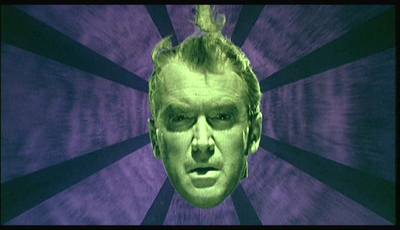
VERTIGO, with it's deliberate pacing, unresolved inclinations, and rear-projection car drives, may not strike one as Hitchcock's crowning achievement (NORTH BY NORTHWEST, REAR WINDOW and PSYCHO all outrank it for me), much less the Greatest Film Ever Made. But for moment - for the decade - Hitch has more than earned his time on the gold medal platform. The portly gent may not appear to be a much of a distance runner, but he finally go around the considerably substantial Orson Welles.
- Jim Tudor
(This article also appears at Zekefilm.org.)

Do you feel this content is inappropriate or infringes upon your rights? Click here to report it, or see our DMCA policy.





 (1)-thumb-80x80-93563.jpg)
